Art and Technology
Here you will find information on Art and Design and Technology.
Our Art curriculum aims to inspire students to express themselves creatively, whilst also supporting pupils to develop their artistic interest and abilities. Creativity is an important outlet for many people, whilst also being a big part of our everyday lives. We aim to nurture students to develop their creativity whilst recognising and celebrating creative achievements and progress. Students are encouraged to build an understanding and respect for different cultures, movements and social issues, while also looking at how art is used as a platform to shape our history and different cultures worldwide.
Students are encouraged to develop their artistic skills from primary school which are built upon throughout their years at Mayfield. Some starting skills encouraged are the potential to have control with a pencil, by pressing lightly when drawing or by showing resilience via the use of a rubber to refine artwork whilst developing drawings and ideas. Proficiency with different media and materials is encouraged to develop students' motor skills while also having high expectations for presentation and accuracy whilst using coloured pencils and paints.
In secondary school students are expected to demonstrate graduated shading, blending and drawing from observation, which would all be required for GCSE subjects. Throughout Mayfield, students are also expected to be reflective and analyse their work against artists and peers to be able to enhance their own abilities and appreciate the work of others.
Artistic achievement is celebrated across the school through displays, social media, tutor time, clubs and exhibitions. The department encourages students to develop their skills and interests through creating fun, engaging topics that help to develop their creativity, ideas and proficiency with different materials and techniques. Our aim is to teach students to analyse artists, photographers and designers, express their own reasoned judgments, while developing a more critical understanding of art and design.
By the end of the Reception year, we aim to ensure that all pupils:
The Mayfield curriculum encourages students to build on their motor skills whilst also developing their curiosity through exploring varied materials. Students are encouraged to analyse and discuss their thoughts and feelings about various outcomes and experiments.
-
Use what they have learnt about media and materials in original ways, thinking about uses and purposes.
-
Represent their own ideas, thoughts and feelings through design and technology and art
-
Safely use and explore a variety of materials, tools and techniques, experimenting with colour, design, texture, form and function
-
Show good coordination in large and small movements
-
Handle equipment and tools effectively
By the end of KS1, we aim to ensure that all Mayfield pupils are taught:
-
To use a range of materials creatively to design and make products.
-
To use drawing, painting and sculpture to develop and share their ideas, experiences and imagination.
-
To develop a wide range of art and design techniques in using colour, pattern, texture, line, shape, form and space.
-
About the work of a range of artists, craft makers and designers, describing the differences and similarities between practices and disciplines, and making links to their own work.
By the end of KS2, we aim to ensure that all Mayfield pupils are taught:
-
To create sketch books to record their observations and use them to review and revisit ideas.
-
To improve their mastery of art and design techniques, including drawing, painting and sculpture with a range of materials (for example, pencil, charcoal, paint, clay).
-
About great artists, architects and designers in history.
By the end of KS3, we aim to ensure that all Mayfield pupils are taught:
-
To use a range of techniques to record their observations in sketchbooks, journals and other media as a basis for exploring their ideas.
-
To use a range of techniques and media, including paintings.
-
To increase their proficiency in the handling of different materials.
-
To analyse and evaluate their own work, and that of others, in order to strengthen the visual impact or applications of their work.
-
About the history of art, craft, design and architecture, including periods, styles and major movements from ancient times up to the present day.
Student’s at Mayfield must complete both of the following components within the two-year timeframe. The first year and a half will be focusing on component 1 (their coursework), whilst from January in their second year they will have 4 months to complete component 2 (exam project). Component 2 cannot be started beforehand as the exam papers are released in January every year.
Component 1:
A portfolio that in total shows explicit coverage of the four assessment objectives. It must include a sustained project evidencing the journey from initial engagement to the realisation of intentions and a selection of further work undertaken during the student’s course of study.
How it's assessed
- No time limit
- 96 marks
- 60% of GCSE
Component 2:
What's assessed
Students respond to their chosen starting point from an externally set assignment paper relating to their subject title, evidencing coverage of all four assessment objectives
How it's assessed
- Preparatory period followed by 10 hours of supervised time
- 96 marks
- 40% of GCSE
Areas of study
In Component 1 and Component 2 students are required to work in one or more area(s) of fine art, such as those listed below:
- Drawing
- Painting
- Sculpture
- Installation
- lens-/light-based media
- photography and the moving image
- printmaking
- mixed media
- land art.
They may explore overlapping areas and combinations of areas.
Knowledge and understanding
The way sources inspire the development of ideas, relevant to fine art including:
- How sources relate to individual, social, historical, environmental, cultural, ethical and/or issues-based contexts
- How ideas, themes, forms, feelings and concerns can inspire personally determined responses that are primarily aesthetic, intellectual or conceptual.
The ways in which meanings, ideas and intentions relevant to fine art can be communicated including the use of:
- Figurative representation, abstraction, stylisation, simplification, expression, exaggeration and imaginative interpretation
- Visual and tactile elements, such as:
- colour
- line
- form
- tone
- texture
- shape
- composition
- rhythm
- scale
- structure
- surface.
Skills
Within the context of fine art, students must demonstrate the ability to:
- Use fine art techniques and processes, appropriate to students’ personal intentions, for example:
- mark-making
- monoprint, collagraph and block printing
- assemblage
- construction
- carving
- film and video
- digital working methods
- Use media and materials, as appropriate to students’ personal intentions, for example:
- charcoal, pastels, pen and ink, crayons and pencil
- watercolour, gouache, acrylic and oil paint
- found materials
- clay, wood and metal
- digital imagery
- different papers and surfaces on which to work.
Student’s at Mayfield must complete both of the following components within the two-year timeframe. The first year and a half will be focusing on component 1 (their coursework), whilst from January in their second year they will have 4 months to complete component 2 (exam project). Component 2 cannot be started beforehand as the exam papers are released in January every year.
Component 1:
A portfolio that in total shows explicit coverage of the four assessment objectives. It must include a sustained project evidencing the journey from initial engagement to the realisation of intentions and a selection of further work undertaken during the student’s course of study.
How it's assessed
-
No time limit
-
96 marks
-
60% of GCSE
Component 2:
What's assessed
Students respond to their chosen starting point from an externally set assignment paper relating to their subject title, evidencing coverage of all four assessment objectives
How it's assessed
- Preparatory period followed by 10 hours of supervised time
- 96 marks
- 40% of GCSE
Areas of study
In Component 1 and Component 2 students are required to work in one or more area(s) of photography, such as those listed below:
- portraiture
- location photography
- studio photography
- experimental imagery
- installation
- documentary photography
- photo-journalism
- moving image: film, video and animation
- fashion photography.
They may explore overlapping areas and combinations of areas.
Knowledge and understanding
The way sources inspire the development of ideas, relevant to photography including:
- How sources relate to historical, contemporary, social, cultural and issues-based contexts and external considerations such as those associated with the cultural industries and client-oriented requirements
- How ideas, themes, subjects and feelings can inspire creative responses informed by different styles, genres and aesthetic considerations and/or an individual's distinctive view of the world.
The ways in which meanings, ideas and intentions relevant to photography can be communicated include the use of:
- Figurative and non-figurative forms, image manipulation, close up, and imaginative interpretation
- Visual and tactile elements such as:
- colour
- line
- form
- tone
- texture
- shape
- pattern
- composition
- scale
- sequence
- surface
- contrast.
Skills
Within the context of photography, students must demonstrate the ability to:
- Use photographic techniques and processes, appropriate to students’ personal intentions, for example:
- lighting
- viewpoint
- aperture
- depth of field
- shutter speed and movement
- use of enlarger
- chemical and/or digital processes
- Use media and materials, as appropriate to students' personal intentions, for example:
- film
- photographic papers
- chemicals appropriate to darkroom practices
- digital media, programs and related technologies
- graphic media for purposes such as storyboarding, planning and constructing shoots.
Student’s at Mayfield must complete both of the following components within the two-year timeframe. The first year and a half will be focusing on component 1 (their coursework), whilst from January in their second year they will have 4 months to complete component 2 (exam project). Component 2 cannot be started beforehand as the exam papers are released in January every year.
Component 1:
A portfolio that in total shows explicit coverage of the four assessment objectives. It must include a sustained project evidencing the journey from initial engagement to the realisation of intentions and a selection of further work undertaken during the student’s course of study.
How it's assessed
-
No time limit
-
96 marks
-
60% of GCSE
Component 2:
What's assessed
Students respond to their chosen starting point from an externally set assignment paper relating to their subject title, evidencing coverage of all four assessment objectives
How it's assessed
-
Preparatory period followed by 10 hours of supervised time
-
96 marks
-
40% of GCSE
Areas of study
In Component 1 and Component 2 students are required to work in one or more area(s) of textile design, such as those listed below:
- art textiles
- fashion design and illustration
- costume design
- constructed textiles
- printed and dyed textiles
- surface pattern
- stitched and/or embellished textiles
- soft furnishings and/or textiles for interiors
- digital textiles
- installed textiles.
They may explore overlapping areas and combinations of areas.
Student’s at Mayfield must complete both of the following components within the two-year timeframe. The first year and a half will be focusing on component 1 (their coursework), whilst from January in their second year they will have 4 months to complete component 2 (exam project). Component 2 cannot be started beforehand as the exam papers are released in January every year.
Component 1:
A portfolio that in total shows explicit coverage of the four assessment objectives. It must include a sustained project evidencing the journey from initial engagement to the realisation of intentions and a selection of further work undertaken during the student’s course of study.
How it's assessed
-
No time limit
-
96 marks
-
60% of GCSE
Component 2:
What's assessed
Students respond to their chosen starting point from an externally set assignment paper relating to their subject title, evidencing coverage of all four assessment objectives
How it's assessed
-
Preparatory period followed by 10 hours of supervised time
-
96 marks
-
40% of GCSE
Areas of study
In Component 1 and Component 2 students are required to work in one or more area(s) of textile design, such as those listed below:
- art textiles
- fashion design and illustration
- costume design
- constructed textiles
- printed and dyed textiles
- surface pattern
- stitched and/or embellished textiles
- soft furnishings and/or textiles for interiors
- digital textiles
- installed textiles.
They may explore overlapping areas and combinations of areas.
Knowledge and understanding
The way sources inspire the development of ideas, relevant to textile design including:
-
How sources relate to cultural, social, historical, contemporary, environmental and creative contexts which might be determined or influenced by functional or non-functional considerations
-
How ideas, feelings, forms, and purposes can generate responses that address personal needs or meet external requirements, such as client expectations and any associated constraints.
The ways in which meanings, ideas and intentions relevant to textile design can be communicated include the use of:
- Figurative and non-figurative representations, stylisation, simplification, surface embellishment, constructional considerations and imaginative interpretation
- Visual and tactile elements, such as:
- colour
- line
- form
- tone
- texture
- shape
- pattern
- composition
- decoration
- repetition
- scale
- structure
- surface.
Skills
Within the context of textile design, students must demonstrate the ability to:
-
Use textile design techniques and processes, appropriate to students’ personal intentions, for example:
- weaving
- felting
- stitching
- appliqué
- construction methods
- printing.
- Use media and materials, as appropriate to students’ personal intentions, for example:
- inks
- yarns
- threads
- fibres
- fabrics
- textile materials
- digital imagery.
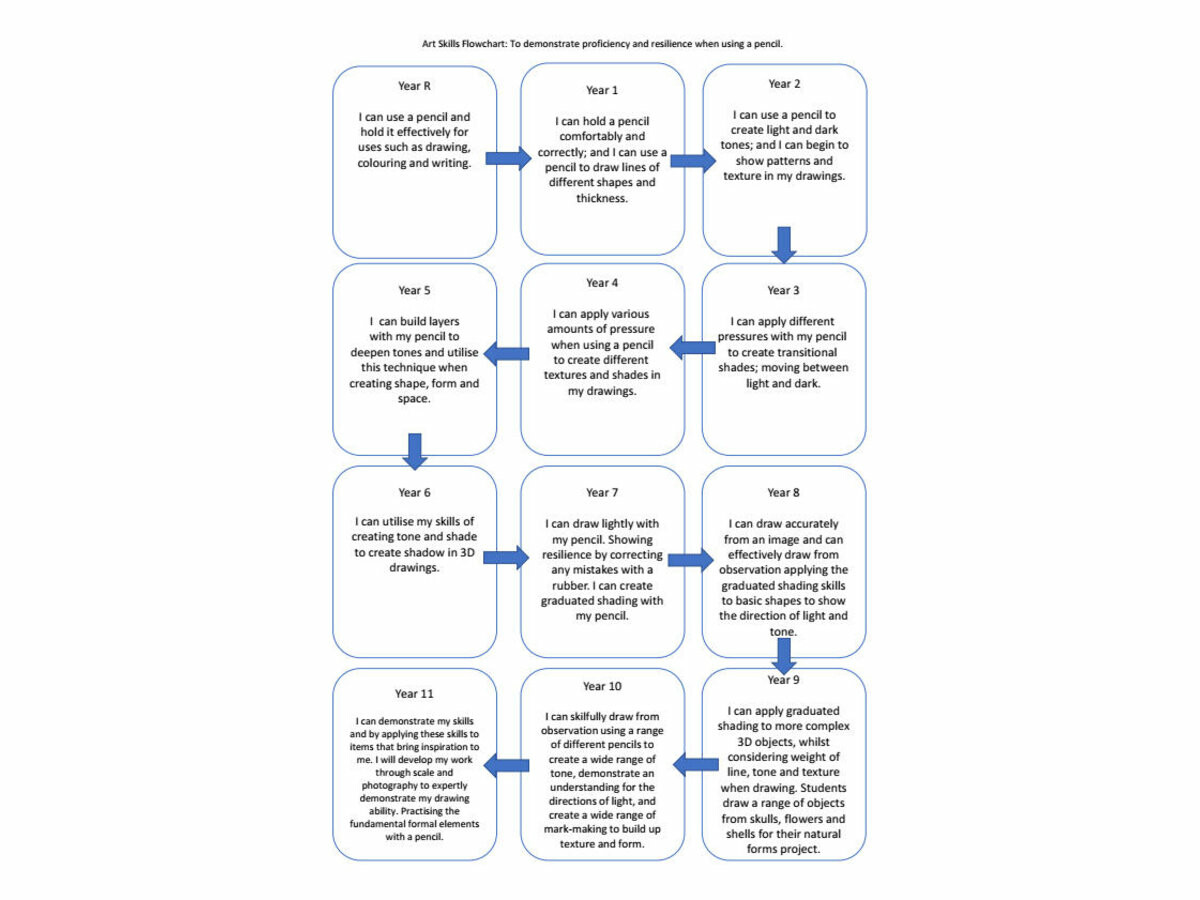
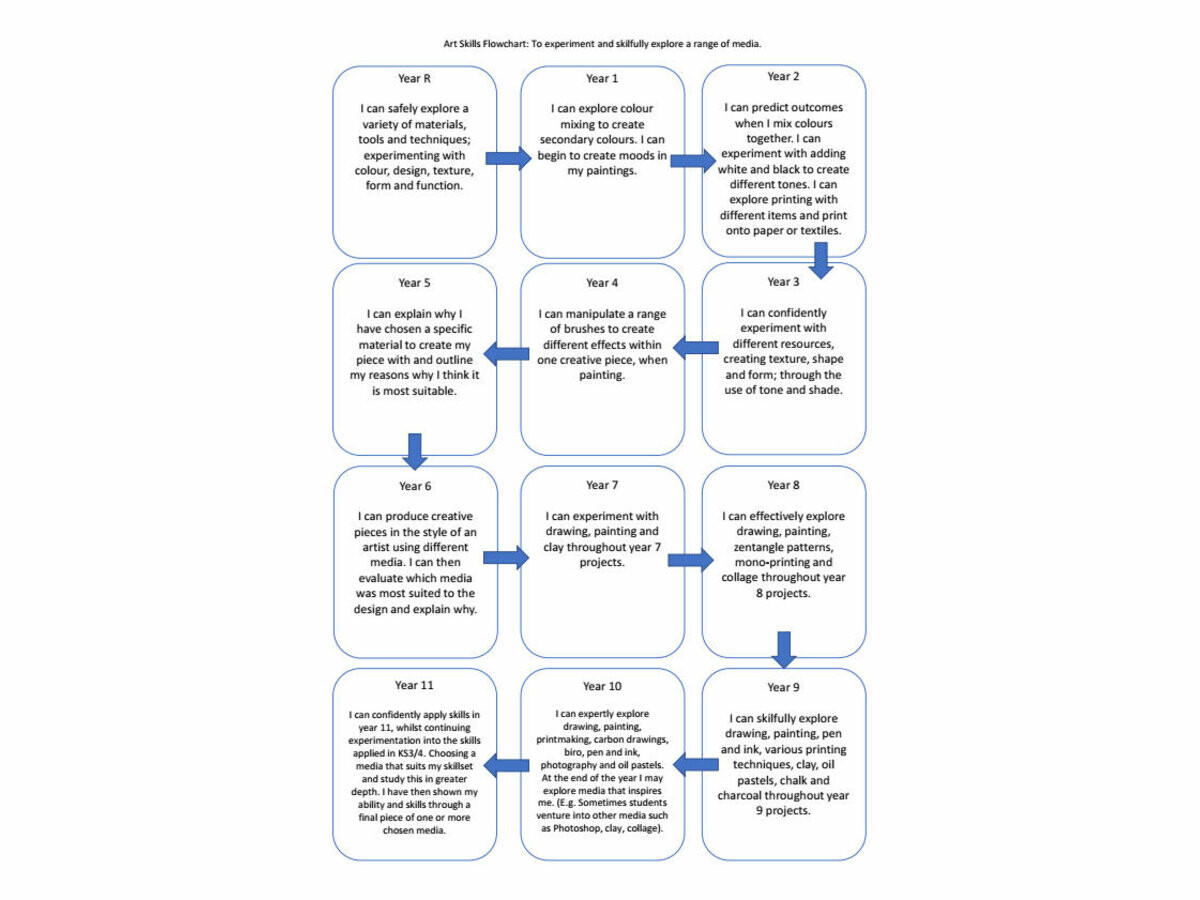
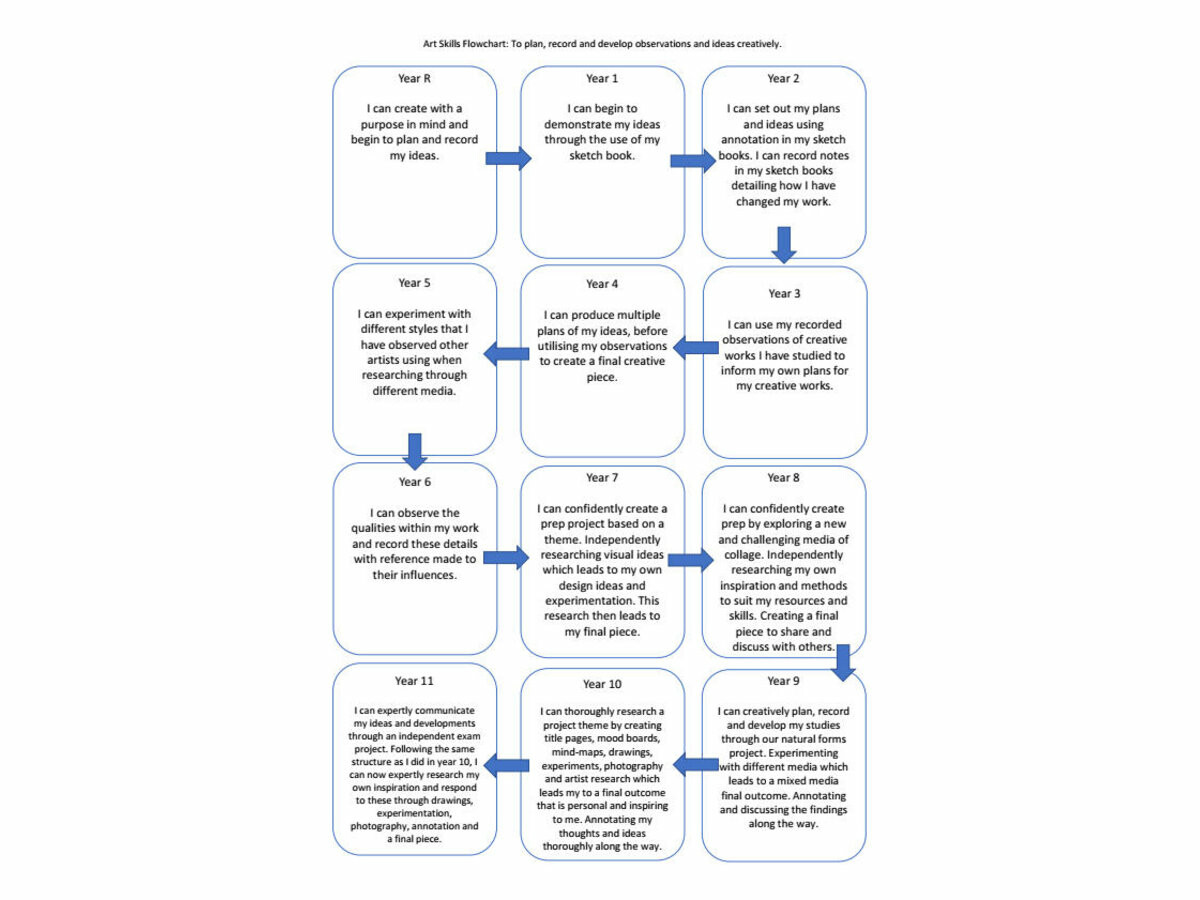
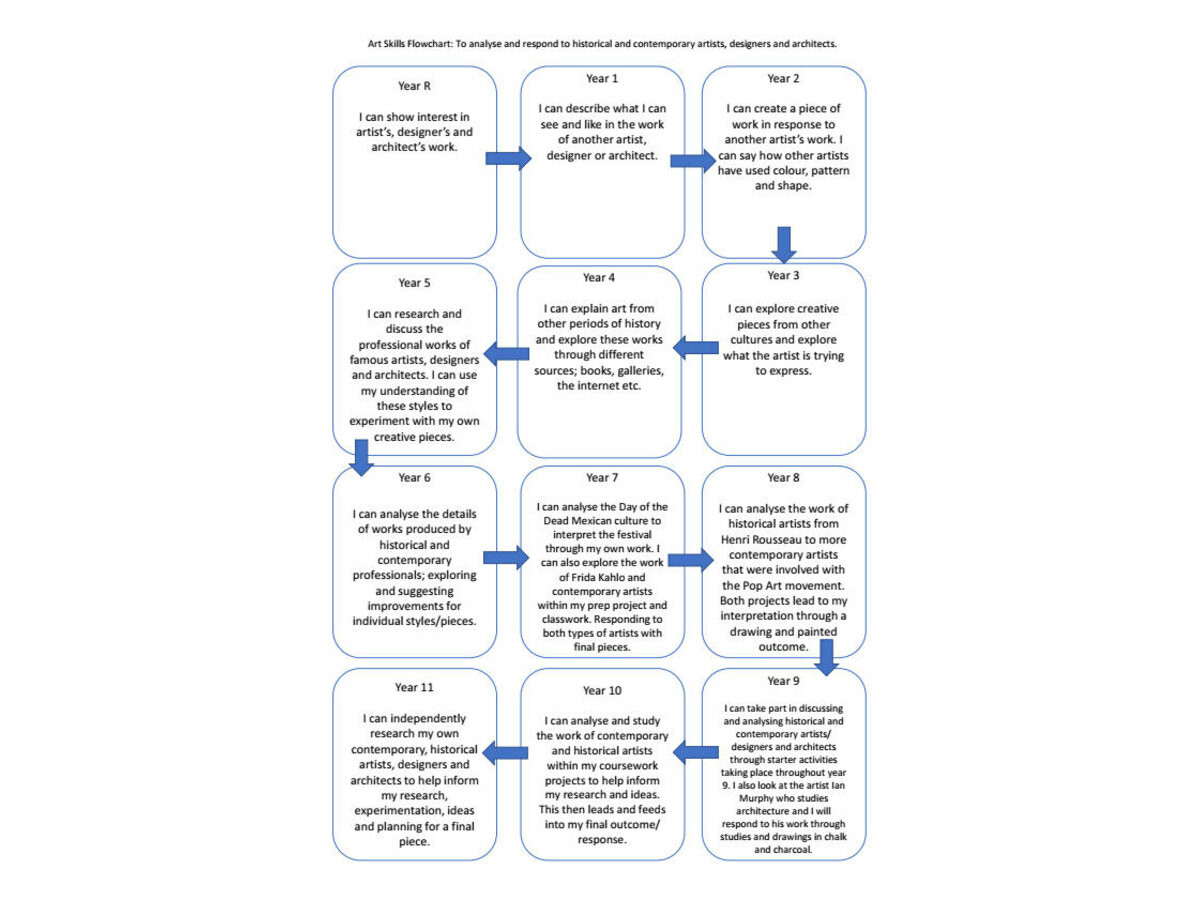
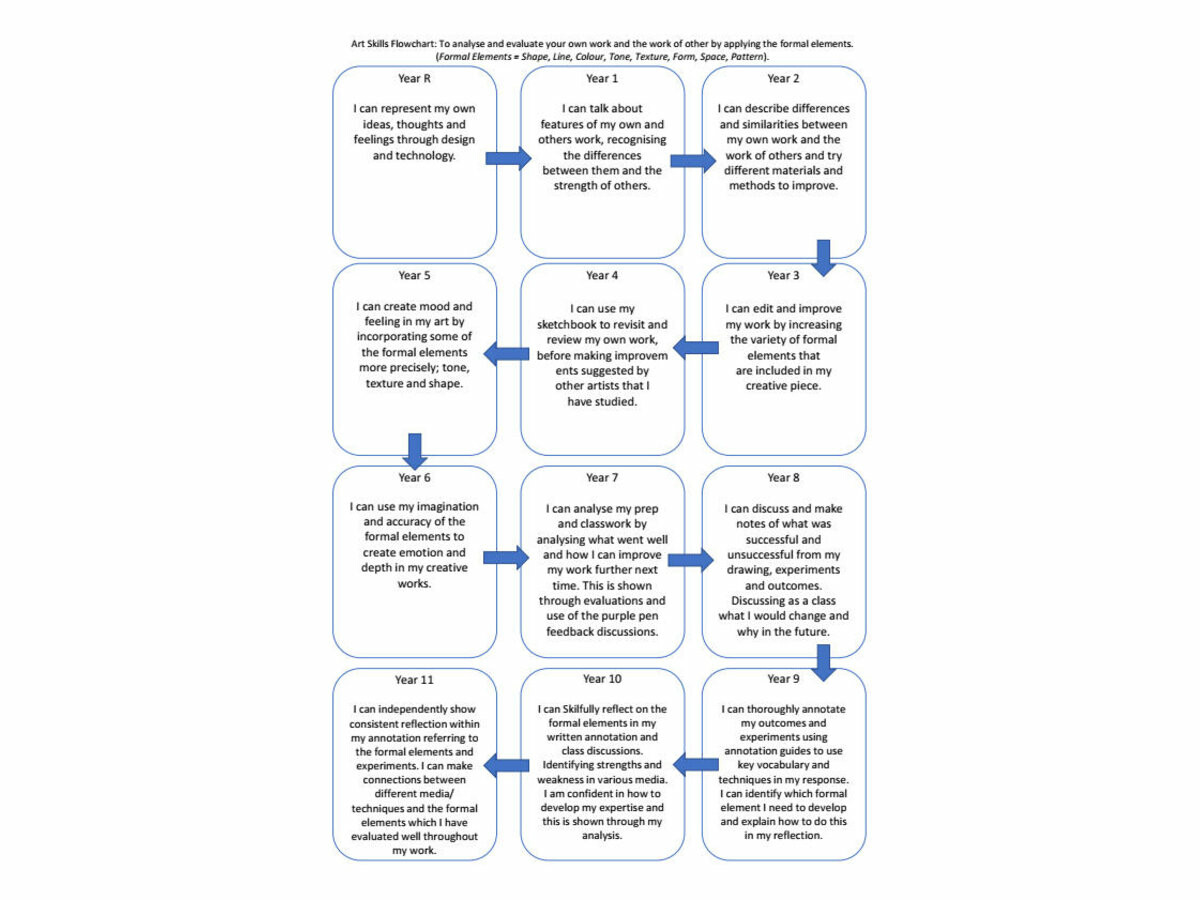
Our Technology curriculum aims to inspire students to use their creativity and imagination to make products and develop their creative, technical, and practical skills. The department aims to inspire students through various creative and practical activities to develop their knowledge and understanding of the design process, while also bringing awareness of how industries are adapting through recent technology.
Students are encouraged to grow their Technology skills from Primary school which are built upon throughout their years at Mayfield. These skills follow a cycle of designing, making, and evaluating, while also developing their technical knowledge and cooking skills. Some key skills encouraged within the primary sector are to develop students’ motor skills by tying knots and using equipment such as scissors. Students are also encouraged to be responsible through gathering and putting away equipment alongside understanding of how to wash up and put equipment away sensibly.
In secondary school students are expected to have built on their primary skills of design, make, and evaluate and are encouraged to analyse outcomes and products in more depth. Students are expected to apply their motor skills to more complex projects to show precision and control through threading needles, using hand tools and utensils. Throughout Mayfield students are also guided to be reflective and analyse their work against the current topic, designers, and their peers to enhance their own abilities and appreciate the work of others.
Our vision is also to cultivate a love of cooking through an array of recipes, nutritional guidance, healthy eating and practical tips or techniques. Learning to cook is a critical life skill that we teach with the aim of promoting student creativity, independence and building their nutritional health and trust in the kitchen.
By the end of the Reception year, we aim to ensure that all pupils:
-
Use what they have learnt about media and materials in original ways, thinking about uses and purposes.
-
Represent their own ideas, thoughts and feelings through design and technology and art
-
Safely use and explore a variety of materials, tools and techniques, experimenting with colour, design, texture, form and function
-
Show good coordination in large and small movements
-
Handle equipment and tools effectively
By the end of KS1, we aim to ensure that all Mayfield pupils are taught:
Through a variety of creative and practical activities, pupils should be taught the knowledge, understanding and skills needed to engage in an iterative process of designing and making. They should work in a range of relevant contexts [for example, the home and school, gardens and playgrounds, the local community, industry and the wider environment]. When designing and making, pupils should be taught to:
Design
-
design purposeful, functional, appealing products for themselves and other users based on design criteria
-
generate, develop, model and communicate their ideas through talking, drawing, templates, mock-ups and, where appropriate, information and communication technology
Make
-
select from and use a range of tools and equipment to perform practical tasks [for example, cutting, shaping, joining and finishing]
-
select from and use a wide range of materials and components, including construction materials, textiles and ingredients, according to their characteristics
Evaluate
-
explore and evaluate a range of existing products
-
evaluate their ideas and products against design criteria
Technical knowledge
-
build structures, exploring how they can be made stronger, stiffer and more stable
-
explore and use mechanisms [for example, levers, sliders, wheels and axles], in their products.
Cooking and nutrition
As part of their work with food, pupils should be taught how to cook and apply the principles of nutrition and healthy eating. Instilling a love of cooking in pupils will also open a door to one of the great expressions of human creativity. Learning how to cook is a crucial life skill that enables pupils to feed themselves and others affordably and well, now and in later life. Pupils should be taught to:
Key stage 1
-
use the basic principles of a healthy and varied diet to prepare dishes
-
understand where food comes from.
By the end of KS2, we aim to ensure that all Mayfield pupils are taught:
Through a variety of creative and practical activities, pupils should be taught the knowledge, understanding and skills needed to engage in an iterative process of designing and making. They should work in a range of relevant contexts [for example, the home, school, leisure, culture, enterprise, industry and the wider environment]. When designing and making, pupils should be taught to:
Design
-
use research and develop design criteria to inform the design of innovative, functional, appealing products that are fit for purpose, aimed at particular individuals or groups
-
generate, develop, model and communicate their ideas through discussion, annotated sketches, cross-sectional and exploded diagrams, prototypes, pattern pieces and computer-aided design
Make
-
select from and use a wider range of tools and equipment to perform practical tasks [for example, cutting, shaping, joining and finishing], accurately
-
select from and use a wider range of materials and components, including construction materials, textiles and ingredients, according to their functional properties and aesthetic qualities
Evaluate
-
investigate and analyse a range of existing products
-
evaluate their ideas and products against their own design criteria and consider the views of others to improve their work
-
understand how key events and individuals in design and technology have helped shape the world
Technical knowledge
-
apply their understanding of how to strengthen, stiffen and reinforce more complex structures
-
understand and use mechanical systems in their products [for example, gears, pulleys, cams, levers and linkages]
-
understand and use electrical systems in their products [for example, series circuits incorporating switches, bulbs, buzzers and motors]
-
apply their understanding of computing to program, monitor and control their products.
Cooking and nutrition
As part of their work with food, pupils should be taught how to cook and apply the principles of nutrition and healthy eating. Instilling a love of cooking in pupils will also open a door to one of the great expressions of human creativity. Learning how to cook is a crucial life skill that enables pupils to feed themselves and others affordably and well, now and in later life. Pupils should be taught to:
Key stage 2
-
understand and apply the principles of a healthy and varied diet
-
prepare and cook a variety of predominantly savoury dishes using a range of cooking techniques
-
understand seasonality, and know where and how a variety of ingredients are grown, reared, caught and processed.
By the end of KS3, we aim to ensure that all Mayfield pupils are taught:
Through a variety of creative and practical activities, pupils should be taught the knowledge, understanding and skills needed to engage in an iterative process of designing and making. They should work in a range of domestic and local contexts [for example, the home, health, leisure and culture], and industrial contexts [for example, engineering, manufacturing, construction, food, energy, agriculture (including horticulture) and fashion]. When designing and making, pupils should be taught to:
Design
-
use research and exploration, such as the study of different cultures, to identify and understand user needs
-
identify and solve their own design problems and understand how to reformulate problems given to them
-
develop specifications to inform the design of innovative, functional, appealing products that respond to needs in a variety of situations
-
use a variety of approaches [for example, biomimicry and user-centred design], to generate creative ideas and avoid stereotypical responses
-
develop and communicate design ideas using annotated sketches, detailed plans, 3-D and mathematical modelling, oral and digital presentations and computer-based tools
Make
-
select from and use specialist tools, techniques, processes, equipment and machinery precisely, including computer-aided manufacture
-
select from and use a wider, more complex range of materials, components and ingredients, taking into account their properties
Evaluate
-
analyse the work of past and present professionals and others to develop and broaden their understanding
-
investigate new and emerging technologies
-
test, evaluate and refine their ideas and products against a specification, taking into account the views of intended users and other interested groups
-
understand developments in design and technology, its impact on individuals, society and the environment, and the responsibilities of designers, engineers and technologists
Technical knowledge
-
understand and use the properties of materials and the performance of structural elements to achieve functioning solutions
-
understand how more advanced mechanical systems used in their products enable changes in movement and force
-
understand how more advanced electrical and electronic systems can be powered and used in their products [for example, circuits with heat, light, sound and movement as inputs and outputs]
-
apply computing and use electronics to embed intelligence in products that respond to inputs [for example, sensors], and control outputs [for example, actuators], using programmable components [for example, microcontrollers]
Cooking and nutrition
As part of their work with food, pupils should be taught how to cook and apply the principles of nutrition and healthy eating. Instilling a love of cooking in pupils will also open a door to one of the great expressions of human creativity. Learning how to cook is a crucial life skill that enables pupils to feed themselves and others affordably and well, now and in later life. Pupils should be taught to: Key stage 3
-
understand and apply the principles of nutrition and health
-
cook a repertoire of predominantly savoury dishes so that they are able to feed themselves and others a healthy and varied diet
-
become competent in a range of cooking techniques [for example, selecting and preparing ingredients; using utensils and electrical equipment; applying heat in different ways; using awareness of taste, texture and smell to decide how to season dishes and combine ingredients; adapting and using their own recipes]
-
understand the source, seasonality and characteristics of a broad range of ingredients.

